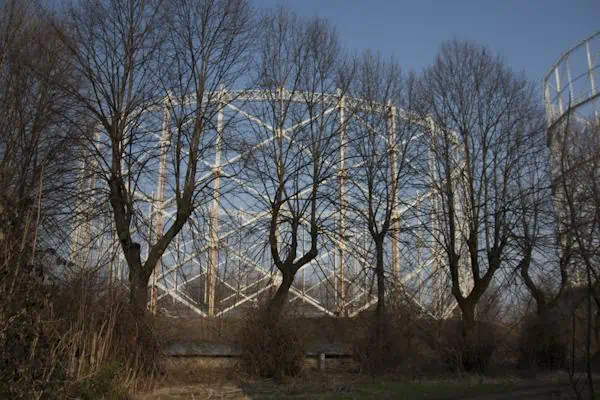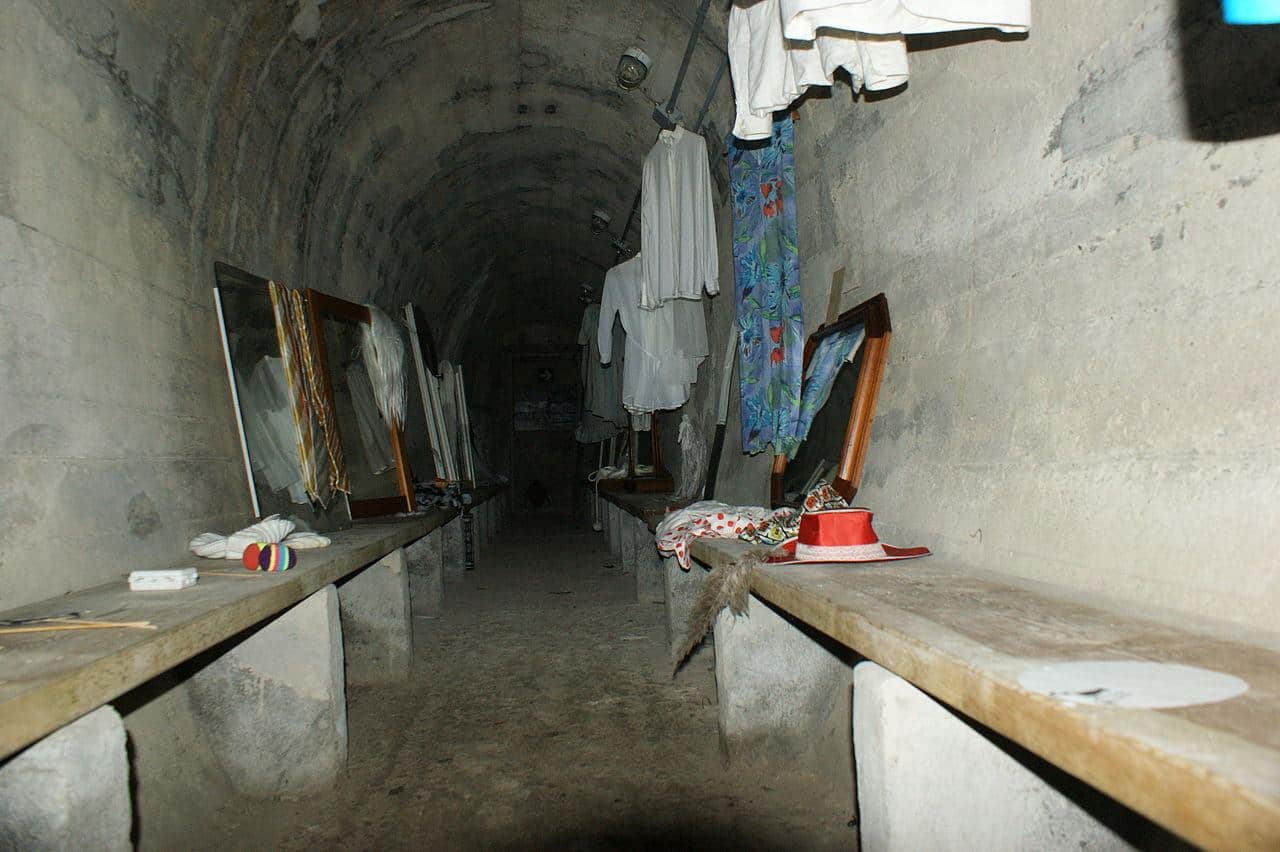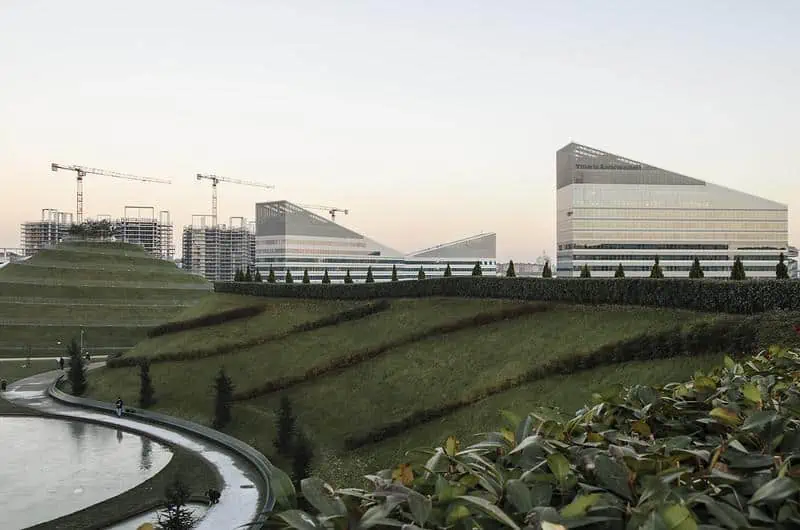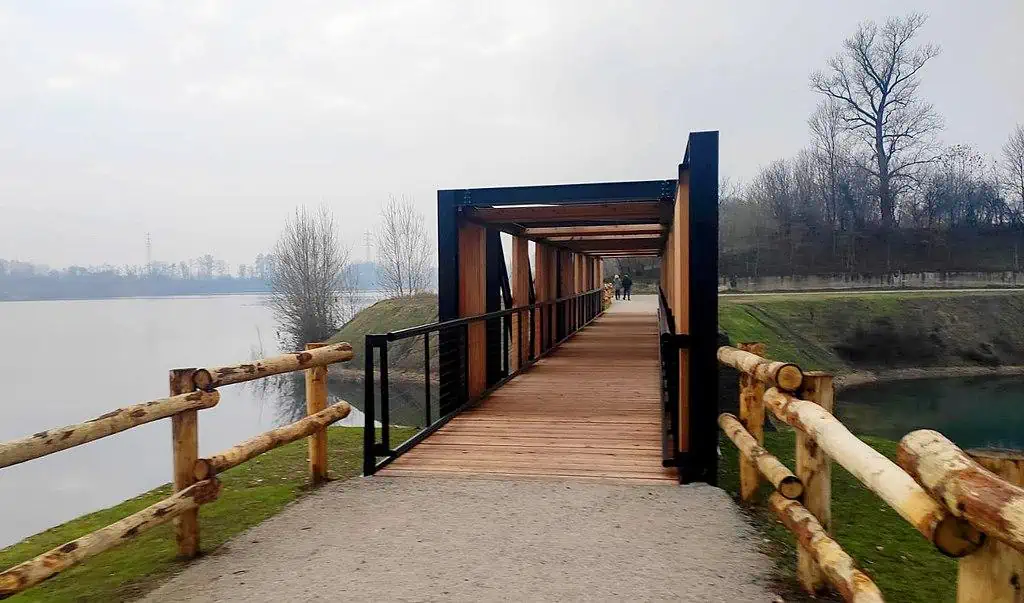
Globally renowned for its world-class coffee culture, high-end fashion, architectural masterpieces and history as early as the 3rd Century, Milan attracts swarms of visitors each year, and so, many of its well-known sites are often crowded with tourists. Nevertheless, alongside the city's most iconic places are dozens of lesser-known nooks that get far less attention and visitors than their famous counterparts, and as such, provide a refreshing respite from the otherwise jam-packed attractions.
Tucked away behind a typical Milanese block in Cappuccini Street, Villa Invernizzi is the former home of Cavalier Invernizzi, the famed inventor of Mio cheese, a scrumptious cream cheese that is popular all over Italy, albeit you probably won’t find it at the premises.
Whilst the cheese mastermind is long gone, the architecturally remarkable villa is now home to tens of unusual residents, a group of captive-born birds that relentlessly scamper throughout the backyard garden all day long. The foundation that currently runs this verdant enclave decided to bring the birds a few decades ago, and while all of which were born outside of their native habitat, you can trace back their ancestry to either Africa or South America.
Standing out among the winged critters, is a vibrant flock of pink flamingos. Originated in Africa, those pinkish hyperactive birds offer a somewhat surreal sight when taking into account their urban whereabouts.
Formerly a hectic industrial complex, the 42-hectare patch of land in Milan’s Bovisa District, also known as La Goccia, was abandoned almost completely in 1994, and ever since has been steadily reclaimed by nature. Established over a century ago, the forgotten complex is enclosed by railway tracks that were once used to transport goods produced by the district’s factories.
Among the most prominent facilities that operated in Goccia were the Candiani factory that manufactured sulfuric acid for spas, and the iconic gasometers, giant tanks whose skeleton is still standing, and during their heyday stored thousands of cubic meters of gas that illuminated much of the city.
The intense industrial activity in the area resulted in a severe soil contamination, so much so, that the complex was entirely fenced off. The prolonged insulation from the outside world unintentionally created a rare natural habitat in an otherwise urban environment, where hedgehogs, foxes, owls and other wild animals roam freely amid the woods and abandoned buildings.
The forested area, named Parco La Goccia, was dotted with dozens of sculptures in 2019 as part of an ongoing effort to transform the land into a public park. Take note that accessing the wooded enclave is extremely challenging right now and entails either trespassing or more preferably, contacting the park’s management as they occasionally organize events for outside visitors.

La Goccia’s disused gasometers
photography by: Parco la Goccia/ Flickr
Italy joined WWII in 1940 as part of the axis powers, and consequently became vulnerable to attacks from the sea, land and air. During the war, a number of safe havens were built in a form of bunkers to protect citizens from air raids, one of which, Bunker Breda, was constructed right next to Bresso Airport, on the northern outskirts of Milan.
The anti-aircraft shelters of the V Aeronautical Section of Breda as they are officially known sat empty for more than half a century until when in 2009, a local museum decided to repurpose the exceptional site into a public space for permanent exhibitions where visitors can explore the region’s complex history and cultural heritage.
The underground complex is divided into four major sections, some are dedicated for contemporary art while others aim to visually reconstruct the everyday lives of the people who sought shelter in the bunker. Background sounds, images and authentic remnants from the war offer a glimpse to a grim reality that is unimaginable in today’s world.

Bunker Breda’s underground complex
photography by: Geamagia/ Wikimedia Commons
As previously mentioned, Milan is famous for being Italy’s industrial powerhouse with major manufacturers operating in the city’s metropolitan area. Perhaps one of the country’s most iconic brands, Alfa Romeo has been making luxury cars since 1906, with Milan often being the epicenter of its worldwide activity.
Once a giant manufacturing complex where the famed Alfa Romeo cars were assembled, Portello Park boasts a post-industrial landscape following the company’s decision in the 1980’s to relocate its plant to several other locations throughout the country.
The 7-hectare park was designed by the world-renowned LAND srl landscape architecture firm, which incorporated a round lake that becomes a skating ice rink each winter, serpent-shaped embankments, a seasonal flower garden and the park’s centerpiece, an artificially made mound topped by an oversized version of the building block of life, the DNA monument.
The latter of which is accessible via a spiral path that slowly ascends along the hillock, offering spectacular views of the city and its surroundings as one walks uphill. As you reach the summit, you’ll come across the double helix sculpture of a DNA structure, designed by Charles Jencks as a gesture to science and progress.

Portello Park’s embankments, pond and mound
photography by: marco mazzone/ Flickr
When visitors think of Milan, they often associate the city with its lavish Renaissance and Gothic architecture, however, as it turns out, it is home to a far more diverse architectural spectrum than what people initially assume.
As evident, the brand-new campus of Bocconi University, designed by the Japanese architecture firm of SANAA, contrasts the city’s typical ornamented architecture with a series of interconnected amebic buildings whose glass-curtain façade is covered with a double layer of vertical elements, and so, in first glance it might look as if the entire place is a single metallic monolith.
The recently completed complex consists of a large residence hall, the Bocconi school of management, an Olympic sized swimming pool and lush green spaces in between. As many campuses today are, the buildings are designed with environmental sustainability in mind, and considered by its architects as energy efficient. One concept that promotes this efficiency are the large windows that let in light and boost an openness throughout the campus.
Even if intuitively you don’t consider universities as of touristy value, the ultra-modern architecture of the complex serves as a much-needed breather for whoever feels saturated by Milan’s neoclassical palaces.

Bocconi University’s new campus building
photography by: Marcuscalabresus/ Wikimedia Commons
Standing out amid Corso di Porta Romana’s rather uninspiring buildings, Casa Maiocchi is one of Milan’s most conspicuous examples of Art Deco Style. The quaint five-story edifice was completed in 1929, with its façade embellished with oddly shaped windows and ornaments.
Following World War II, a new master plan was implemented and so, the street along with many others was widened by several meters. As a result, one of the building’s empty walls was now exposed, impairing the overall masterpiece.
Up until quite recently the blank side was partly occupied by a large advertisement sign. In an attempt to beautify the building’s Achilles’ heel, its owner invited Cheone, a local street artist, to create a large-scale mural on the southern wall. Titled as “The Vision”, the mural features a distorted version of the building’s main façade, reminiscent of Gaudi’s Battlo House.
The third largest park in Milan after Parco Nord and Parco Forlanini, Parco delle Cave (the park of the quarries) as its Italian name suggests, was formed following the abandonment of five quarries that formerly were mined for their rich deposits of gravel and sand. Over the years, the abandoned quarries in the city’s western outskirts turned into lakes, which later were reused for recreational activities.
Recognizing the sheer lack of green spaces throughout the city, the municipality of Milan ultimately decided in the 1970’s to transform the dystopian landscape into an attractive urban park. It took no less than two decades until this project came into fruition, and yet, two out of the 5 quarries, Ongari and Cerruti, were decommissioned only recently.
Encompassing 23 hectares, of which 11 hectares of land and 12 hectares of water, the forgotten quarries were quickly reclaimed by the surrounding nature, and thus attracting wild animals such as kingfishers, foxes and the adorable emerald frogs.
After many years where the quarries were incessantly damaged due to environmental crimes, the city launched an extensive campaign to decontaminate them. Interestingly, as part of the cleaning works, dozens of car skeletons were salvaged from the bottom of the newly formed lake, presumably after falling victim to mafia wars.
Due to the aforementioned preservation efforts, both lakes were entirely fenced off, and as such, are extremely tricky to access. While several breaches do exist, if you wish a less precarious experience it is possible to either bike or hike at the surrounding area north of the lake which offers an uncrowded, bucolic expanses of meadows and woodland.

Parco delle Cave’s natural scenery as seen from one of the pedestrian walkways along the lakes
photography by: Julian Hallon/ Wikimedia Commons
One of Italy’s and Europe’s largest publishing companies, Mondadori has been printing books, newspapers and magazines all over the world since 1907. After its number of employees increased ten times fold to over 3,000 workers in the mid 1960’s, the company decided to relocate all of its activity into one complex.
Giorgio Mondadori, the founder’s son and then chairman, commissioned world-renowned Brazilian architect, Oscar Niemeyer, to design the company’s new headquarters after deeply marveling at his monumental works in the newly established capital of Brasilia.
Inaugurated in 1975 at Segrate, a suburb west of Milan, the headquarters features a 5-story office building encased behind a massive concrete white arcade, which in turn is engulfed by a 2-hectare reflection pool. Protruding from within the pond’s surface are two extremely convoluted wings, pierced with small open spaces where workers and visitors alike often take their lunch break.
Perhaps the most iconic part of the complex is its elevated walkway over the mini-lake that also serves as the headquarters’ main entrance. While functionally, this building is rather mundane, walking on the mid-water pavement with a reflected silhouette of the whitish edifice accompanying you along the way, is an unexpectedly awe-inspiring experience.

Palazzo Mondadori at its fullest glory, with its façade reflected on the nearby pool’s surface
photography by: 1992 since/ Flickr